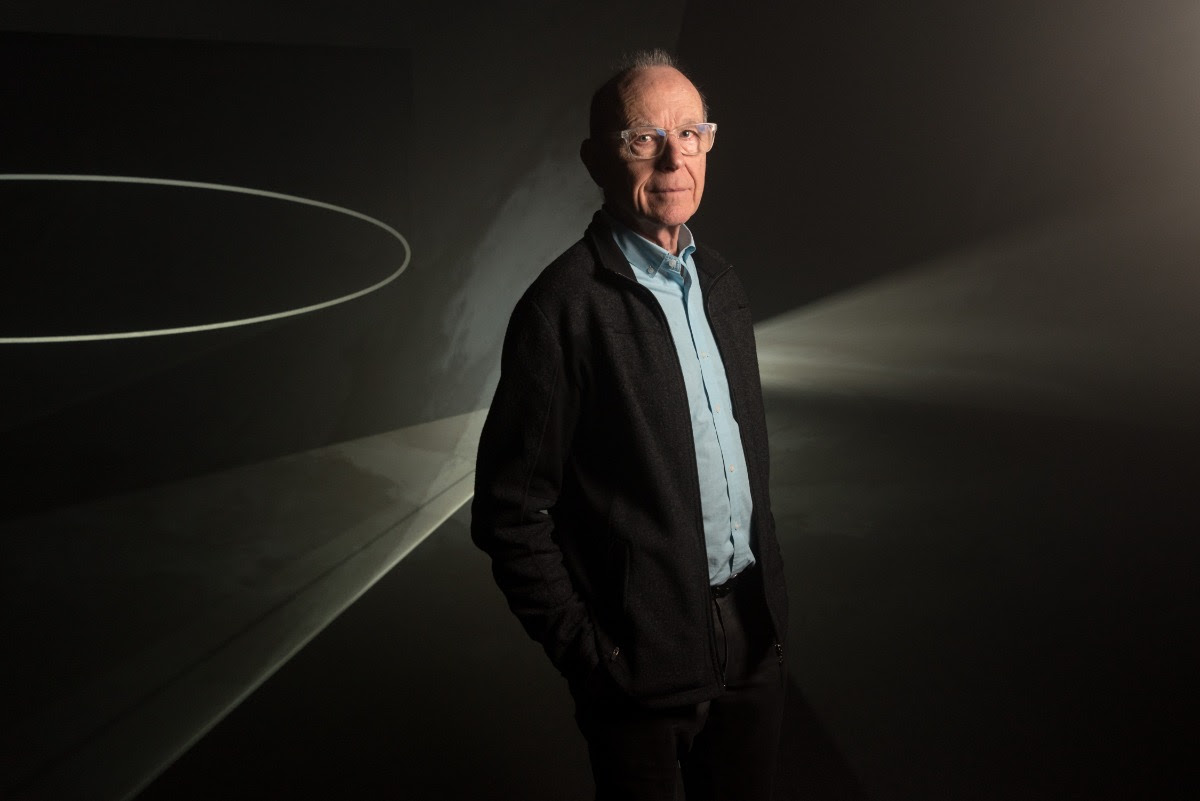In the avant-garde enclave of the London Filmmakers Co-op, Anthony McCall remained relatively inconspicuous among his peers until the early 1970s, when he boldly decided todistill the cinematic medium to its most elemental form—the projection beam itself. This beam, McCall noticed, possessed an untapped plastic, sculptural potential. By that time, artists like James Turrell, Bruce Nauman, Robert Irwin, and Dan Flavin had already been experimenting extensively with fluorescent, halogen, and neon light, not to mention the pioneering works of László Moholy-Nagy and Nicolas Schöffer. However, McCall sought more than mere luminosity; his focus was on the modeling properties of light, its volumetric presence, mutability, and its capacity to reshape space.
Anatomy of Light: Anthony McCall’s “Solid Light” Exhibition at Tate
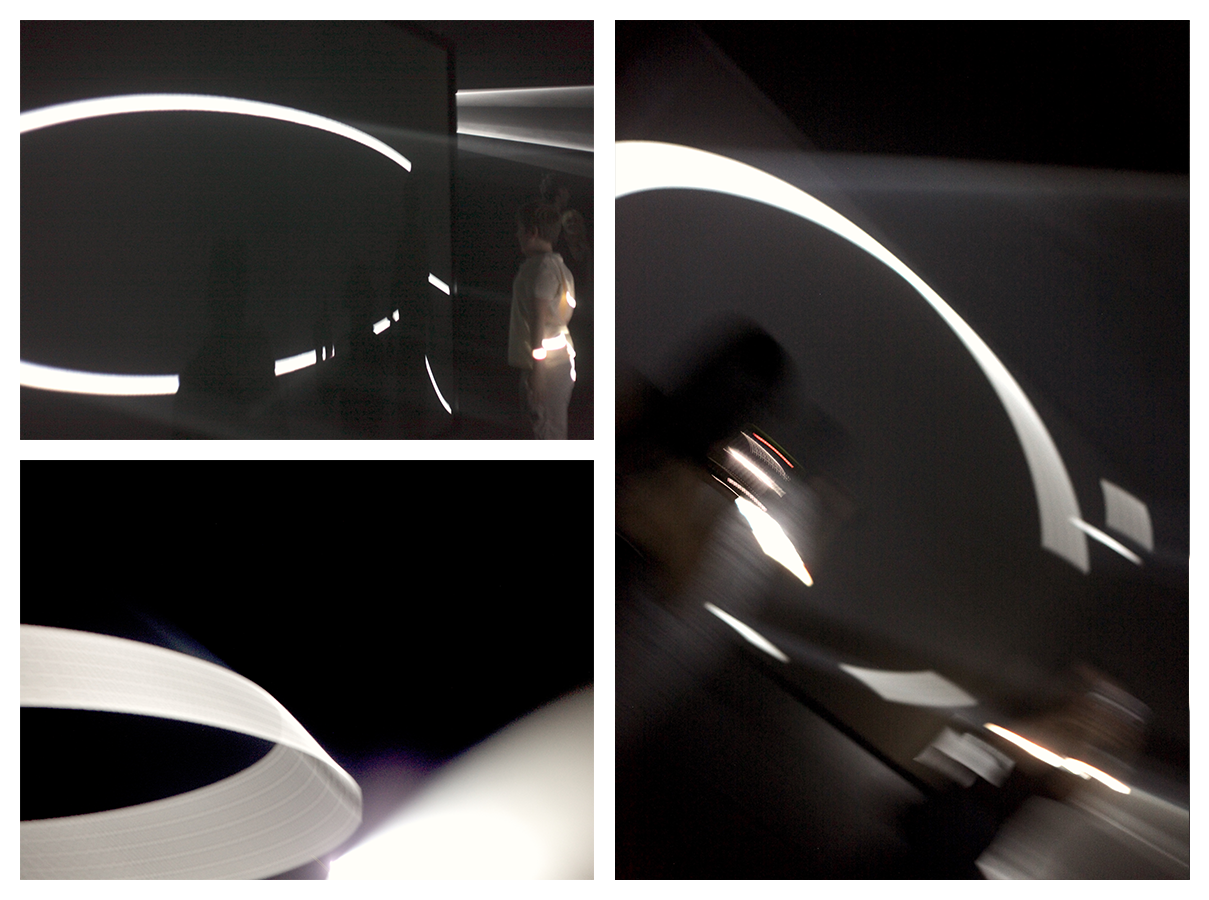
During this transformative period, McCall met his future wife, American conceptual artist Carolee Schneemann, and followed her to New York. It was during a transatlantic flight that he conceived “Line Describing a Cone” (1973), the first of his “solid light” installations. In “Line Describing a Cone,” a point is projected onto a surface, tracing an arc that gradually forms a circle in a 35-minute progression. The protagonists of this minimalist drama (would the circle close? would the point’s final position align with its start?) were both the figure on the wall and the projector beam’s cone. The projector lens served as a paradoxical element, a source of the sublime that one cannot gaze into directly.
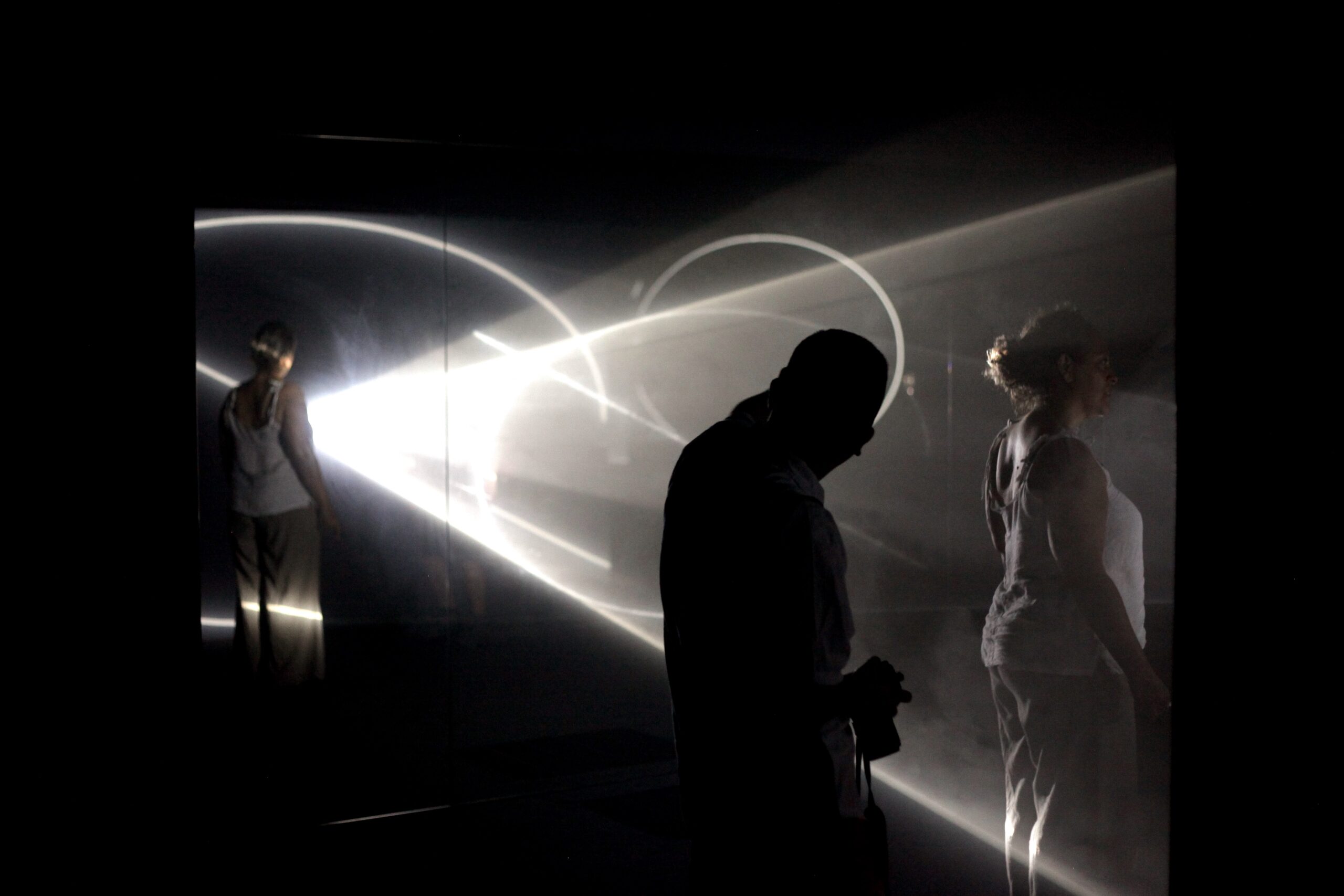
Face to Face
McCall showcased the installation in gritty New York lofts, where the presence of smokers provided texture to the light beam, turning viewers into participants in an impromptu performance. A particularly evocative photograph from this period captures fellow artist Gordon Matta-Clark observing “Line Describing a Cone”—a poignant moment, given that Matta-Clark would soon create his own iconic circular incision in the abandoned building’s wall in “Conical Intersect.”
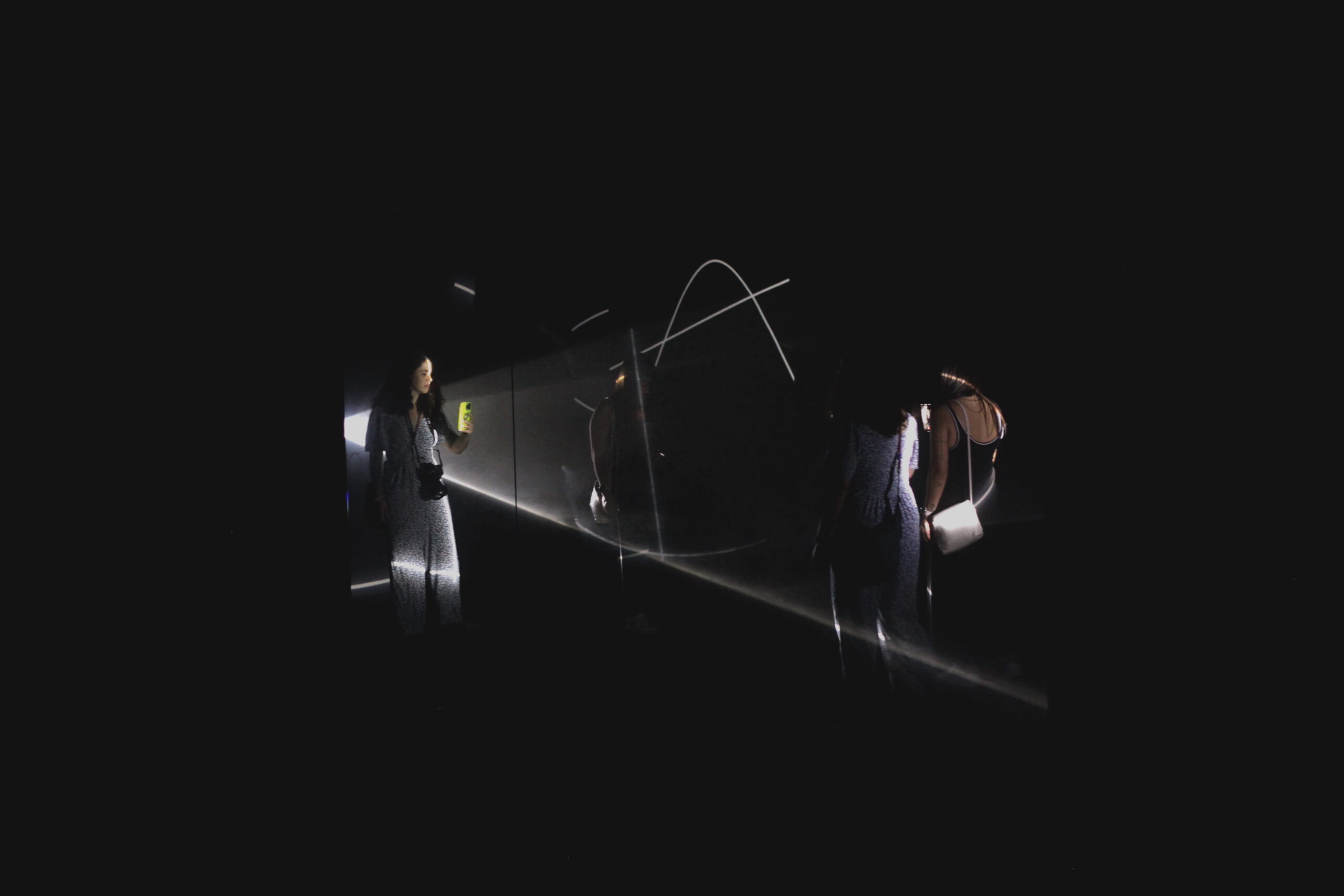
After a period of designing several other “solid light” installations—each more complex, and expensive, employing multiple projectors—McCall ceased their production by the late 1970s. Legend has it that a pivotal moment occurred during a showing of “Line Describing a Cone” at the Swedish Konsthallen gallery. In the sterile environment where smoking was prohibited, the work transformed into an “Invisible Line Describing an Invisible Cone”—a mishap that could have signaled McCall’s shift towards the Fluxus movement, though this likely wasn’t his artistic intention.
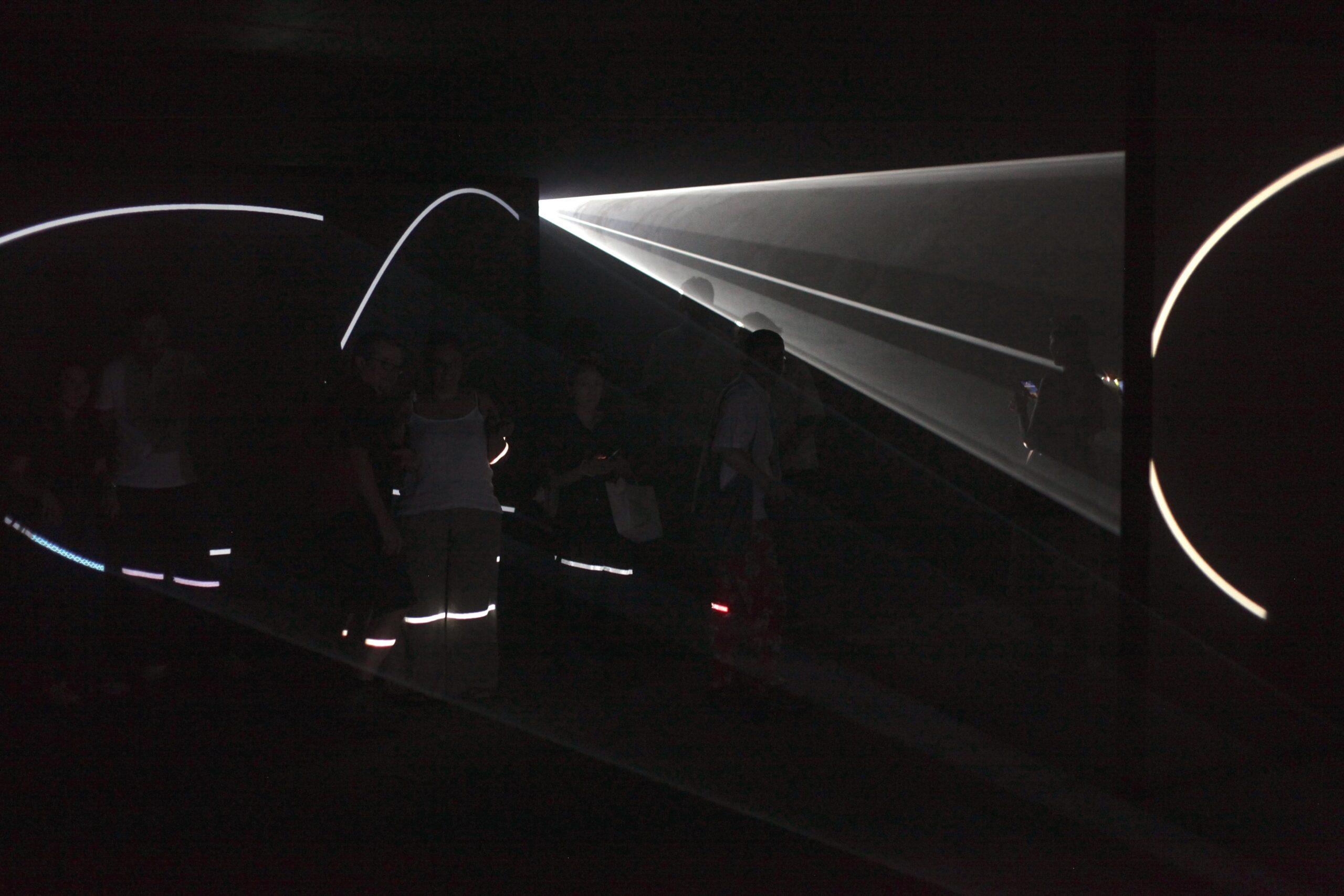
Fast forward to the early 2000s, with the advent of digital projectors and, crucially, smoke machines, McCall “revived” and began to realize ideas accumulated over a quarter-century hiatus. His resurgence was marked by a series of high-profile solo exhibitions at prestigious venues: the Centre Pompidou and Tate in 2004, the Museum für Moderne Kunst in Frankfurt in 2005, and the Serpentine Gallery in 2007. This renewed interest continues unabated, with “Solid Light” currently on display at Tate until April.
In Tate’s dimmed exhibition hall, light assumes a sculptural presence, transmuting space and generating open abstract forms with edges evocative of gossamer lace. Spectators find themselves simultaneously drawn to and apprehensive of these ethereal luminous shafts. As one’s optics adapts, light transcends its role as a mere message, instead becoming the information itself—a form and architectural element.

The gradual metamorphoses of the projectionsinduce a deceleration of perceptual processes, acalculated impact characteristic of McCall’s approach. The hybridity of the viewer’s experience manifests in multiple modes of visual engagement: one might become an inadvertentmodifier of the installation, an unstable component within its structure, or itsprotagonist. Observers might witness others interact, creating shadow plays and layered effects, wander around, or seek refuge in the shadowy interstices between projections. Regardless of approach, each viewer becomes apart of the performative aspect of the work.

McCall’s installations resist imposed narratives or explicit messages. As he states, ‘I don’t think it’s necessary to know what you’re looking at.’ The light-saturated environment creates spontaneous images and metaphors; it itself is a metaphor, if one looks widely enough.

